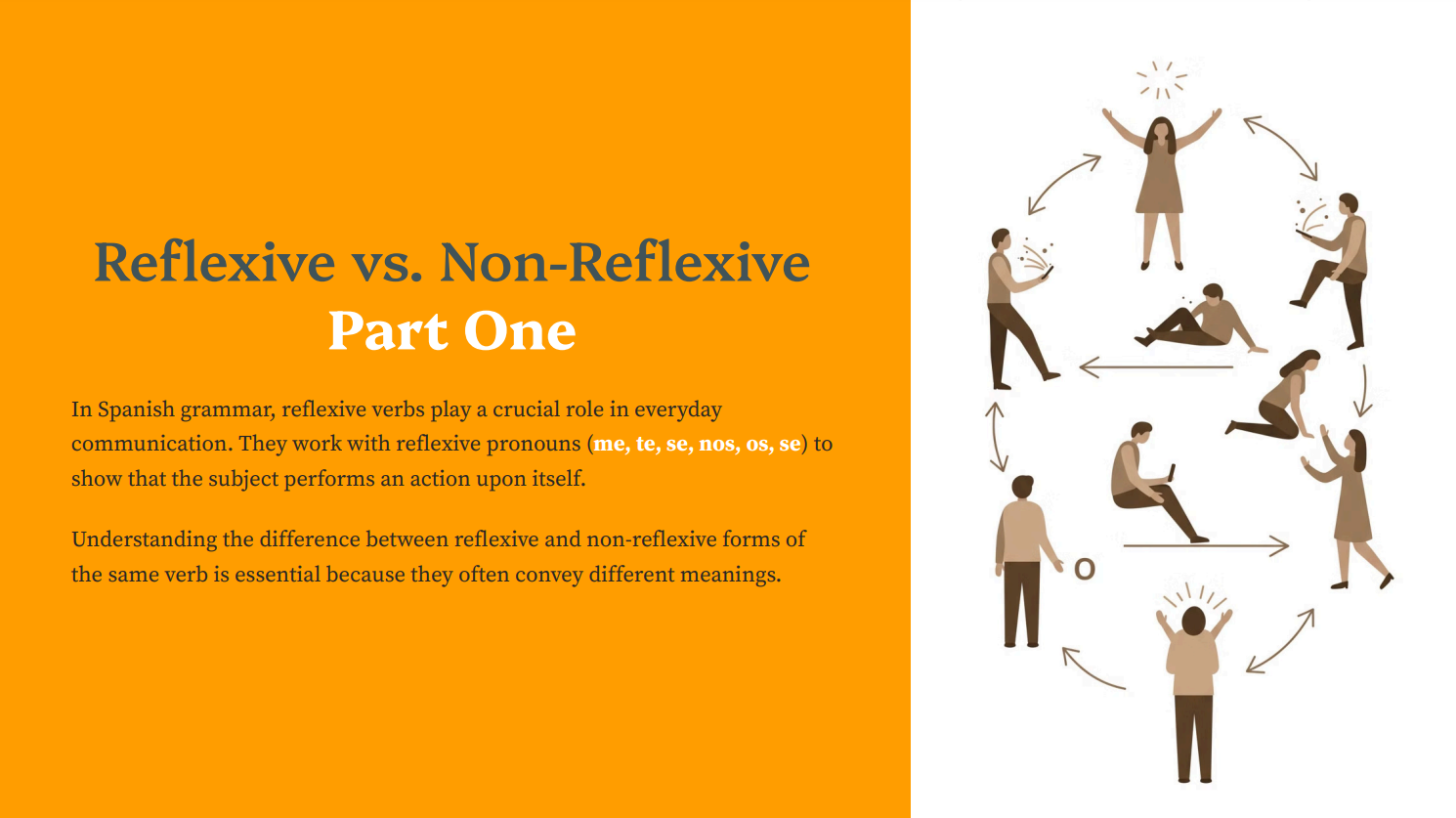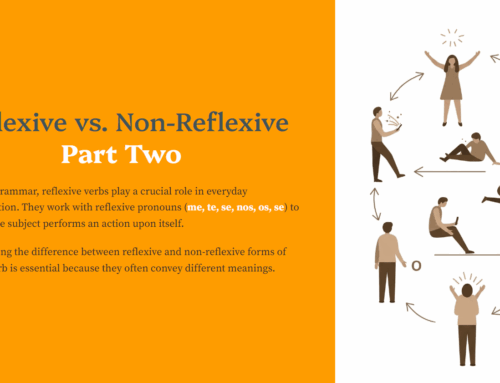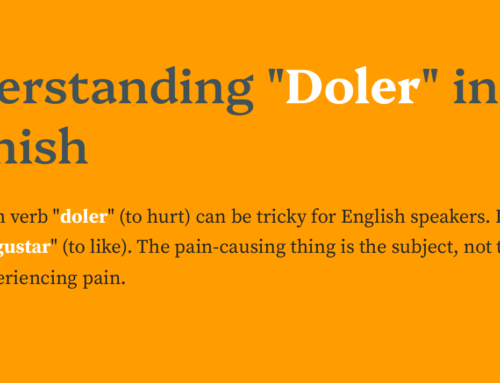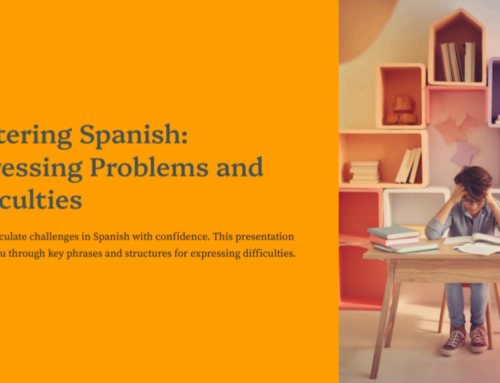Reflexive vs. Non-Reflexive Verbs in Spanish
Part One: Understanding the Difference
In Spanish grammar, reflexive verbs play a crucial role in everyday communication. They work with reflexive pronouns (me, te, se, nos, os, se) to show that the subject performs an action upon itself.
Understanding the difference between reflexive and non-reflexive forms of the same verb is essential because they often convey different meanings.
Ir vs. Irse: Destination vs. Departure
- Ir: To go (focuses on the destination)
Example: Voy al cine. — I’m going to the cinema. - Irse: To leave / To go away (focuses on the action of leaving)
Example: Me voy de la fiesta. — I’m leaving the party.
Quedar vs. Quedarse: Meeting vs. Staying
- Quedar: To arrange to meet / To fit / To be left
Example 1: Quedamos en el parque a las 5. — We are meeting in the park at 5.
Example 2: Ese vestido te queda bien. — That dress fits you well. - Quedarse: To stay somewhere
Example: Me quedo en casa esta noche. — I’m staying home tonight.The reflexive form indicates a decision or action to remain in a specific location, emphasizing the person’s choice to stay rather than leave.
Llamar vs. Llamarse: Calling vs. Being Named
- Llamar: To call (on the phone, to attract attention)
Example: Voy a llamar a mi mamá. — I’m going to call my mom. - Llamarse: To be called (used for names)
Example: Me llamo David. — My name is David.
Encontrar vs. Encontrarse: Finding vs. Meeting/Feeling
- Encontrar: To find something
Example: Encontré mi teléfono en la mesa. — I found my phone on the table. - Encontrarse: To meet someone unexpectedly
Example: Me encontré con Juan en la calle. — I ran into Juan on the street. - Encontrarse: To feel (emotionally or physically)
Example: Me encuentro cansado hoy. — I feel tired today.





Leave A Comment
You must be logged in to post a comment.